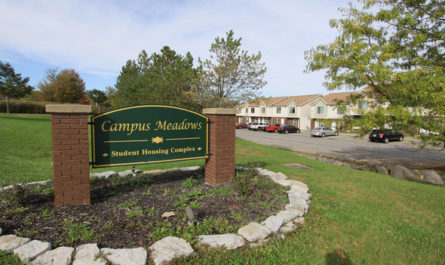What is Lung Cancer?
Lung Cancer is a type of cancer that starts in the lungs, if you were unaware. Cancer starts when cells in the body start uncontrollably growing. Lung cancers typically start in the cells lining the bronchi and parts of the lungs such as the bronchioles or alveoli. There are two main kinds of lung cancer: NSCLC and SCLC.
Non-Small Cell Lung Cancer:
About 80-85% of all lung cancers are NSCLCs. The main subtypes of NSCLC are adenocarcinoma, squamous cell carcinoma, and large cell carcinoma. These subtypes, which start from distinct types of lung cells, are grouped together as NSCLC because their treatment and outlook are often similar.
Adenocarcinoma:
Adenocarcinoma starts in the cells that would normally secrete substances such as mucus. Adenocarcinoma occurs in people who currently smoke or formerly smoked, but it is also the most common type of lung cancer seen in people who do not smoke. It is more common in women than in men, and it is more likely to occur in younger people than other types of lung cancer. Adenocarcinoma is usually found on the outer parts of the lung and is more likely to be found before it has spread. People with a type of adenocarcinoma called adenocarcinoma in situ (previously called bronchioloalveolar carcinoma) tend to have a better outlook than those with other types of lung cancer.
Squamous Cell Carcinoma:
Squamous cell carcinoma starts in squamous cells, flat cells that line the inside of the airways in the lungs. They are often linked to a history of smoking and tend to be found in the central part of the lungs, near the bronchus.
Large Cell (undifferentiated) Carcinoma:
Large cell carcinoma can appear in any part of the lung. It tends to grow and spread quickly, which makes it more difficult to treat. A subtype of large cell carcinoma, known as large cell neuroendocrine carcinoma, is a fast-growing cancer that is equivalent to small cell lung cancer.
Other Subtypes:
A few other types of NSCLC, such as adenosquamous carcinoma and sarcomatoid carcinoma, are much less common.
Small Cell Lung Cancer:
About 10-15% of all lung cancers are SCLC and it is sometimes called oat cell cancer. This type of lung cancer grows and spreads faster than NSCLC. About 70% of people with SCLC will have cancer that has already spread when they are diagnosed. Since this cancer grows so quickly, it tends to respond well to chemotherapy and radiation therapy. Unfortunately, for most people, cancer returns at some point.
Other Types of Lung Tumors:
Lung Carcinoid Tumors:
Carcinoid tumors of the lung account for fewer than 5% of lung tumors. Most of these grow slowly.
Other Lung Tumors:
Other types of lung cancer such as adenoid cystic carcinomas, lymphomas, and sarcomas, as well as benign lung tumors such as hamartomas are rare. These are treated differently from the more common lung cancers.
Cancers That Spread to the Lungs:
Cancers that start in other organs (such as the breast, pancreas, kidney, or skin) can sometimes spread to the lungs, but these are not lung cancers. Treatment for metastatic cancer to the lungs is based on where it started.
Risk Factors:
- Firsthand smoke (you’re the one smoking)
- Secondhand smoke (you were/are around smokers)
- Exposure to radon (a radioactive gas made from uranium)
- Exposure to asbestos (a group of naturally occurring silicate minerals that are resistant to heat and corrosion)
- Exposure to other cancer-causing agents in the workplace (such as uranium, arsenic, beryllium, cadmium, silica, vinyl chloride, nickel, chromium, coal, mustard gas, chloromethyl ethers, and diesel exhaust)
- Taking certain dietary supplements (such as beta carotene)
- Arsenic in drinking water
- Air pollution
- Personal or family history
Symptoms:
The most common symptoms of lung cancer are:
- A cough that does not go away or gets worse
- Coughing up blood or rust-colored sputum (spit or phlegm)
- Chest pain is often worse with deep breathing, coughing, or laughing
- Hoarseness
- Loss of appetite
- Unexplained weight loss
- Shortness of breath
- Feeling tired or weak
- Infections such as bronchitis and pneumonia that do not go away or keep returning
- New onset of wheezing
If lung cancer spreads to other parts of the body, it may cause:
- Bone pain (like pain in the back or hips)
- Nervous system changes (such as headache, weakness or numbness of an arm or leg, dizziness, balance problems, or seizures), from cancer spread to the brain
- Yellowing of the skin and eyes (jaundice), from cancer spread to the liver
- Swelling of lymph nodes (collection of immune system cells) such as those in the neck or above the collarbone
Some lung cancers can cause syndromes, which are groups of specific symptoms.
Horner Syndrome: Cancers of the upper part of the lungs are called Pancoast Tumors. These tumors are more likely to be NSCLC than SCLC. Pancoast tumors can affect certain nerves to the eye and part of the face, causing a group of symptoms called Horner Syndrome:
- Drooping or weakness of one upper eyelid
- A smaller pupil in the same eye
- Little or no sweating on the same side of the face
- Can cause severe shoulder pain
Superior Vena Cava Syndrome: The SVC is a large vein that carries blood from the head and arms down to the heart. It passes next to the upper part of the right lung and the lymph nodes inside the chest. Tumors in this area can press on the SVC, which can cause the blood to back up in the veins. This can cause:
- Swelling in the face, neck, arms, and upper chest (sometimes with a bluish-red skin color)
- Headaches
- Dizziness
- Change in consciousness
Paraneoplastic Syndrome: Some lung cancers make hormone-like substances that enter the bloodstream and cause problems with tissues and organs, even if the cancer has not spread there yet. These problems are called paraneoplastic syndromes. Sometimes these syndromes may be the first symptoms of lung cancer. Because the symptoms affect other organs, a disease other than lung cancer may first be suspected of causing them. Paraneoplastic syndromes can happen with any lung cancer but are associated with SCLC. Some common syndromes include:
- SIADH (syndrome of inappropriate anti-diuretic hormone): Cancer cells make ADH, a hormone that causes the kidneys to hold water. This lowers salt levels in the blood. Symptoms include:
- Fatigue
- Loss of appetite
- Muscle weakness or cramps
- Nausea
- Vomiting
- Restlessness
- Confusion
- Cushing Syndrome: Cancer cells make ACTH, a hormone that causes the adrenal glands to make cortisol. This causes:
- Weight gain
- Easy bruising
- Weakness
- Drowsiness
- Fluid retention
- High blood pressure
- High blood sugar levels
- Diabetes
- Nervous System Problems: SCLC can sometimes cause the body’s immune system to attack parts of the nervous system.
- Lambert-Eaton Syndrome: Muscles around the hips become weak. One of the first signs may be trouble getting up from a sitting position. Later, muscles around the shoulder may become weak
- Paraneoplastic Cerebellar Degeneration: Can cause loss of balance and unsteadiness in arm and leg movement, as well as trouble speaking or swallowing.
- Lambert-Eaton Syndrome: Muscles around the hips become weak. One of the first signs may be trouble getting up from a sitting position. Later, muscles around the shoulder may become weak
SCLC can cause other nervous system problems, such as muscle weakness, sensation changes, vision problems, or even behavioral changes.
- Elevated levels of calcium in the blood (hypercalcemia), which can cause frequent urination, thirst, constipation, nausea, vomiting, stomach pain, weakness, fatigue, dizziness, and confusion.
- Blood clots
“What should I do if I suspect myself or someone else of having lung cancer?”-
If you think that you or a loved one may have lung cancer, CALL A DOCTOR IMMEDIATELY!!! Schedule an appointment to have tests done because that may end up being the decision that saves your life or their life!
For more information on all distinct types of cancer (including lung cancer), treatment options, research, and more, visit the American Cancer Society website at www.cancer.org.


 by
by 

